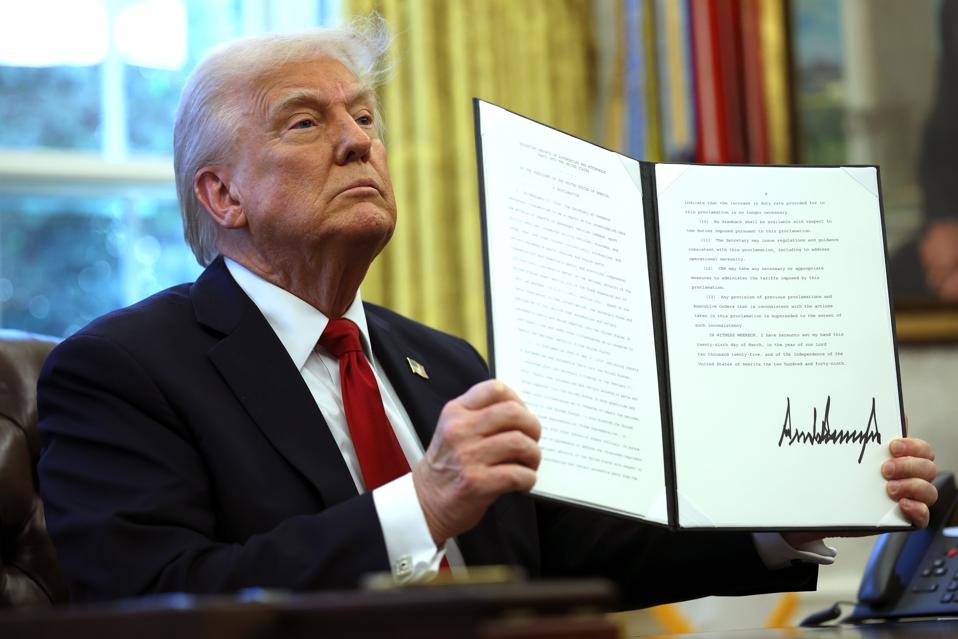President Trump’s latest executive order slapping a 25% tariff on imported cars and auto parts may seem like a blunt-force move to reshore manufacturing, but it may trigger ripple effects the industry isn’t ready for.
Under the new policy, which takes effect April 3 for vehicles and May 3 for parts, USMCA-compliant vehicles and parts can avoid the full brunt of the tariff, at least for now. But analysts warn the rules are murky and the long-term impact hinges on how aggressively the U.S. enforces content tracking.
“We expect meaningful pressure on US Autos names,” said Joseph Spak, auto analyst at UBS, in a note to clients. “There are still a lot of unknowns, but if this remains in place, there will clearly be some pain for the companies to digest.”
Spak estimates that fully offsetting the impact of the tariffs could cost traditional automakers Ford and General Motors $4,000–$5,000 per vehicle, depending on whether parts are ultimately included.
“Demand will likely be impacted,” he noted.
Ripple effects
For now, auto parts from Mexico and Canada appear exempt from tariffs, pending a method to isolate and tax the non-U.S. content. But that grace period may be short-lived. And if parts are included later, the economics of manufacturing outside the U.S. could flip fast.
According to UBS, that could tilt the playing field in the pickup truck wars, where Ford’s U.S.-built F-150 might gain ground over GM’s Silverado and Sierra, some of which are assembled in Mexico and Canada.
“If no tariffs on parts, then F-150 would become more price competitive and could gain share,” Spak wrote. “If parts are included, it might get somewhat more balanced.”
While Tesla and Rivian may benefit in the near term due to their U.S.-based production, even they are not immune. “Not all components” used by those EV makers are American-made, Spak pointed out.
The tariffs could also force painful decisions around capital investment and plant tooling.
GM and Ford have excess factory capacity in the U.S., but “that capacity is not tooled to make those vehicles,” Spak said. “So, some capital investment might be needed… and this could take time.”
Suppliers, especially smaller ones further down the supply chain, could face the harshest pressure. Some may not survive a prolonged squeeze, and “potentially adding disruption challenges,” Spak warned.
The ripple effects may stretch beyond automakers to consumers. Automakers’ first reaction may be to cut back production in Mexico and Canada, reduce dealer incentives, and eventually raise prices.
UBS’s modeling shows that even with partial price increases, sales could fall 2.5% to 5%, depending on how broadly tariffs apply.
The Trump administration may offer automakers a lifeline in terms of regulatory relief, but nothing is set in stone yet. “Once the dust settles… there may be some positives on the horizon,” said Spak, citing a possible “auto loan interest deduction on US-made vehicles and potential emissions regulation relaxation.”
With global supply chains hanging in the balance, automakers will have to act quickly if they want to stay ahead of the policy curve.

